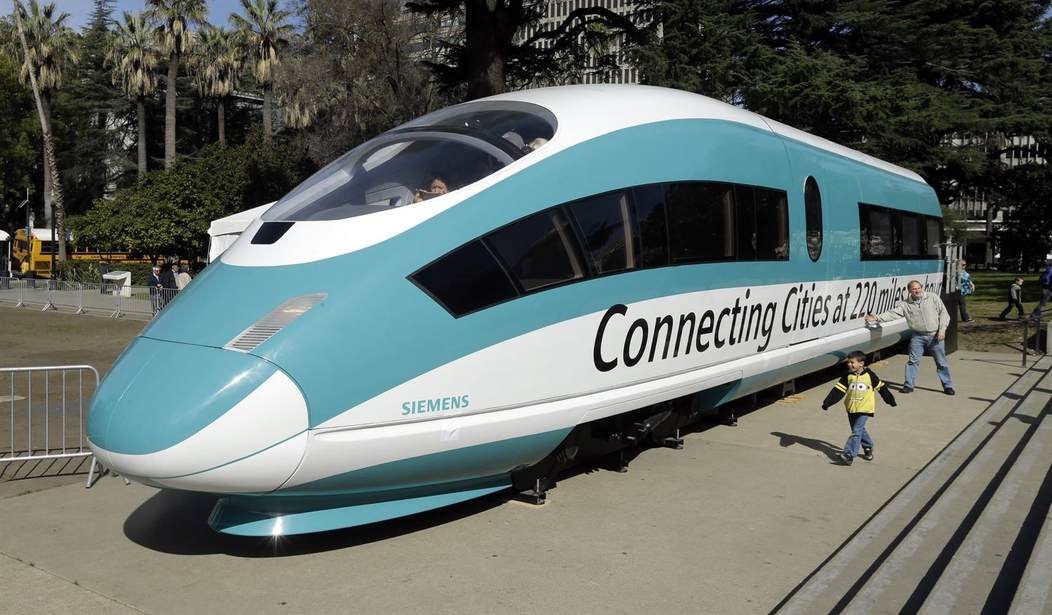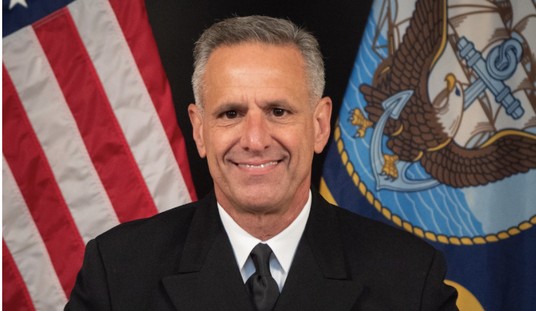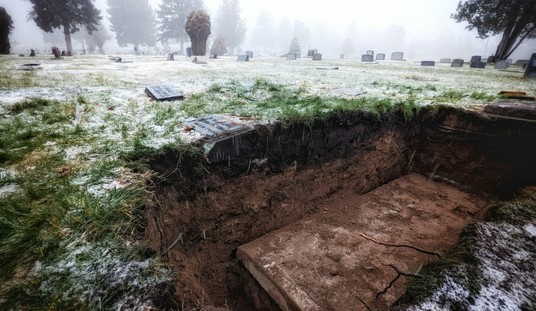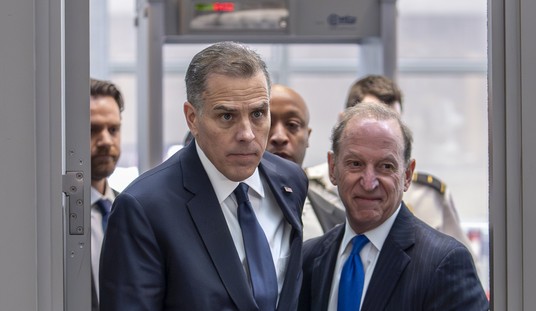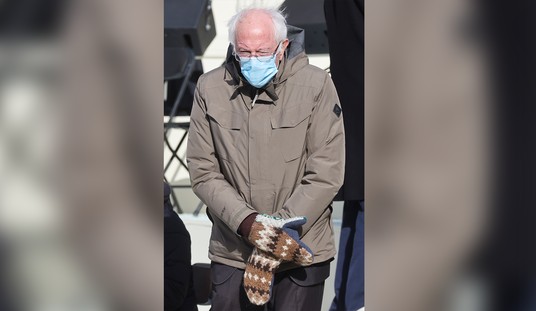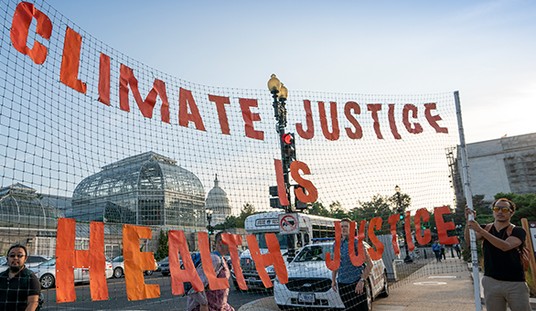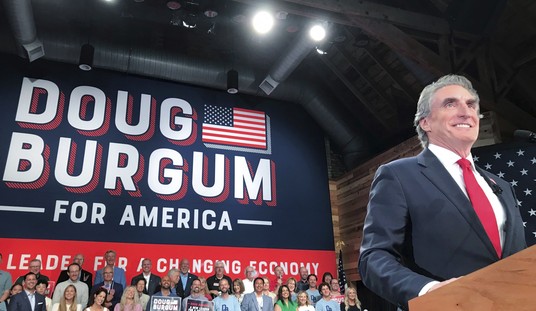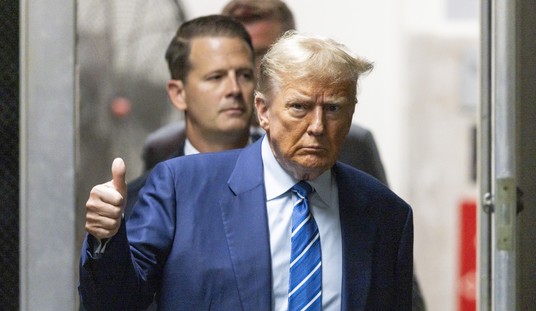"Men want one thing and it's literally regional high-speed rail (HSR) with affordable, frequent, and reliable local public transit connections and mixed-use development around transit hubs."
This post on X from David Hogg went viral enough that it warranted write-ups on several sites including this one. Outside of it being dubious that Hogg knows what the definition of a man is, the idea that the top priority of the male of the human species is the implementation of HSR all around the nation is so far off that you can't spot it with NASA's James Webb Space Telescope.
What men really want is an entirely different article that I might write in the near future, but for now, I want to focus on the left's obsession with high-speed rail. It's almost baffling how stuck they are on it given the expense, complication, and corruption that would come featured with its creation...
...actually, I can see why they like it so much if that's the case, but I digress.
Usually when making the case for HSR, leftists love pointing to Japan, a nation they just recently referred to as "xenophobic." Japan is a very fascinating place and their bullet train is something to behold. The Shinkansen, first built in 1964, has trains that can go up to 198 mph with different lines taking you to different places in Japan at rapid speeds. The cars are clean, and range from economy to luxurious, with even economy being quite comfortable. The trains run on time down to the centisecond and are considered late if they are off by even a single second.
By comparison, if Amtrak here in America is late by 10 minutes, it's still considered on time.
Riding Japan's bullet train, you'd be easily convinced that something like that in America would be fantastic, but the issue is that what works for the Japanese isn't necessarily something that works for America. We're talking two different land masses and just as importantly, two different cultures.
Let's start with landmass. America is big. Very, very big. So big that when the English come here they're surprised to learn they're still in the same state after driving one way for a few hours. Getting across it all in a train going mega-fast would be a really great idea...in a world where airplanes didn't exist. As Randle O'Toole wrote for CATO in 2021, bullet trains have been obsolete in America since 1958 when Boeing's 707 jetliner took passengers across the nation at 600 mph.
O'Toole dove pretty deep into his case against high-speed rail, first noting the insane expense by looking at California's attempts at building HSR in its own state. California has been working on this project for decades and has an incomplete line that's launched no cars or passengers as of yet...and that's over flat land:
California has spent an average of more than $100 million per route‐mile building 220 mph track on flat land.17 The latest estimates project that the entire 520‐mile route will cost $100 billion, of which $20 billion is for 120 miles of flat land and $80 billion is for 400 miles of hilly or mountainous territory.18 That works out to $200 million a mile for hilly areas.
At these costs, Obama’s original high‐speed rail plan would require well over $1 trillion, while the USHSR’s plan would need well over $3 trillion. Building a system longer than China’s would cost at least $4 trillion.
If completed, the expense of maintaining the rails is astronomical, and if the Democrats want rail going across the nation, those maintenance costs are going to be unthinkable. Our country has a $176 billion backlog for maintenance and that's just for local rail. How do we think repairs over a national rail line are going to add up?
And believe me, there wouldn't be enough riders to offset the cost. The taxpayers would be on the hook for this maintenance despite the fact that most of them will still be riding around in their own cars down the highway. O'Toole looked at the travel habits of countries with HSR and found that people still drive their cars by and large. In Spain, more people take the bus. Meanwhile, in the HSR Nirvana of Japan, most people still drive their own cars too:
When Japan opened its first high‐speed rail line in 1964, nearly 70 percent of passenger travel was by rail and only 12 percent by automobile. Although Japan’s lines are considered highly successful, today only 25 percent of passenger travel is by rail and nearly 70 percent by auto.46
The three European countries with the most high‐speed rail lines are France, which opened its first high‐speed rail line in 1981; Germany, which opened its first in 1991; and Spain, which opened its first in 1992. Since then, all three have built many lines, with Spain’s system extending the most miles. Yet, as shown in Figure 1, none have seen rail reduce automobile or airline travel. At most, money‐losing high‐speed rail lines reduced the market share of profitable bus lines.
America is not primed to build HSR anytime soon, and the planning alone would take years, possibly even decades thanks to legal problems, lawsuits, and the amount of land the country would need to buy and steal. That's not even factoring in the obvious political corruption that would take place. HSR projects are prime ground for corrupt deals as O'Toole points out:
For example, the Obama administration’s revised, 2010 high‐speed rail plan included a line to Duluth, Minnesota, which has only 120,000 people in its urban area. Not coincidentally, at the time the map was issued, the chair of the House Transportation and Infrastructure Committee was from Duluth.76
Politics also influenced the California rail project. Many people wonder why California started building high‐speed rail in the Central Valley, which has the fewest people along the route. The answer goes back to 2010, when the Obama administration gave California a high‐speed rail grant. Rep. Jim Costa (D‑CA) was running a tough re‐election campaign, so Obama required that funds granted to California be spent in or near Costa’s district and allowed Costa to announce the grant instead of the secretary of transportation, who usually makes such announcements.77 Costa won by only 3,000 votes, so the grant may have made the difference to his campaign.78
But the ultimate issue with all this is if the U.S. did implement HSR it wouldn't behave anything like Japan's.
Understand that Japanese culture is respectful, clean, punctual, and polite. Their trains look and act as they do because Japanese culture allows for that kind of upkeep and operational success. America is not like this at all. To understand this, just look at some of the horror stories about Amtrak trains.
No air conditioning, sewage smells in sleeper cars, torn seats, dirty cars, and hours-long delays. Many stations are trashy and grotesque, covered in graffiti, and horribly policed.
America's HSR system would be wildly expensive to build, ridiculously expensive to maintain, and would have the same issues as Amtrak but probably worse due to its enormity. It's a bad investment that would take up a lot of land for no good reason as people continue to drive cars or fly in airplanes.
To be clear, I love trains. I love riding on them. I prefer them to every other method of travel and an HSR sounds pretty great in theory, but in practice, this is a nightmarish undertaking. Anyone with a lick of sense could see how this would just be the worst idea, but as usual, the left loves a good bad idea.

